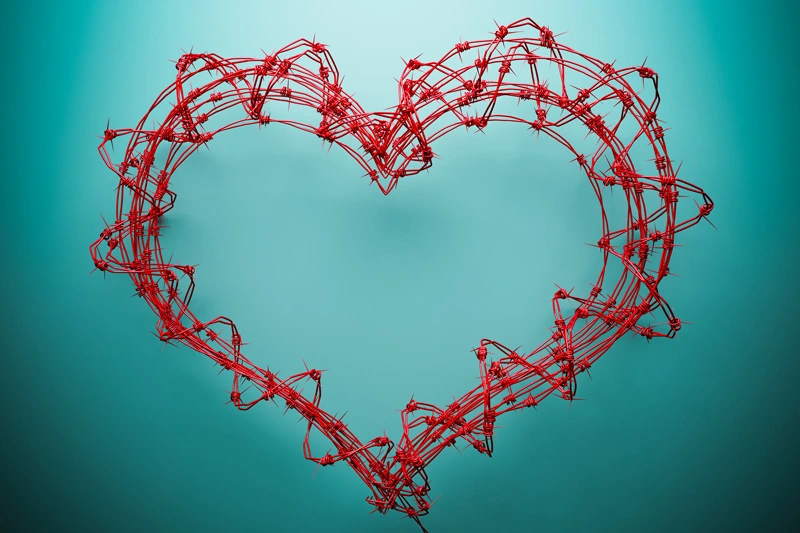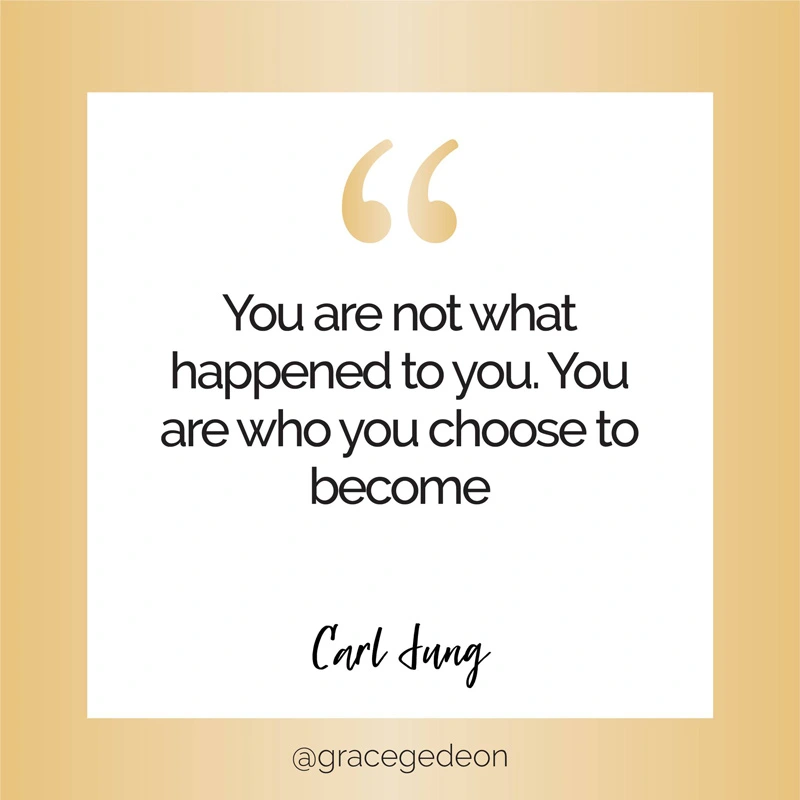
Breaking Down Your Barriers to Intimacy – Part 2: The Feelings Barrier
How Unprocessed Emotions Quietly Block Love and Connection
Have you ever found yourself reacting intensely in a relationship—shutting down, lashing out, or withdrawing—without quite knowing why? Maybe something small triggers a big emotional response, and you’re left wondering, “Where did that come from?”
These moments are often signs of unresolved emotions—feelings that haven’t been fully acknowledged, expressed, or healed. And they form a second major barrier to intimacy.
In Part 1 of this series, we explored the Beliefs Barrier—the false fixed beliefs that quietly shape how you show up in love. If you haven’t read that yet, you can catch up here. It provides the foundation for understanding what we’re about to unpack.
Today, we’re looking into the second intimacy block in the B.E.D. framework—the Feelings Barrier.
A Quick Recap: What Is B.E.D.?
From years of professional and personal experience, I’ve identified three key Barriers to Intimacy. To make them easier to remember, I’ve given them the acronym B.E.D. (because, let’s be honest, intimacy and beds do tend to go together).
B.E.D. stands for:
- BELIEFS – False Fixed Beliefs
- EMOTIONS – Toxic, unresolved emotions
- DEFENCES – Defence mechanisms or behaviours that block closeness
Let’s take a deeper look at the Feelings Barrier—what it is, how it shows up, and what to do about it.
What Is the Feelings Barrier?
You might assume that feelings and intimacy naturally go hand in hand—and in many ways, they do. When we share our emotions honestly, we open the door to closeness, empathy, and trust.
But not all emotions support intimacy.
Your false fixed beliefs—like those we explored in Part 1—often join forces with a deeper layer of inner experience: a backlog of toxic, unresolved emotions. This is what forms the Feelings Barrier.
Toxic shame, repressed guilt, unresolved grief or pain, underlying anxiety, hidden loneliness, and even denied joy can start to build up inside you—especially when they’ve been ignored or buried over time. These unacknowledged feelings don’t just fade away. Instead, they linger, quietly shaping your mood, your self-worth, and your capacity to connect.
This “unholy alliance” between belief and emotion becomes a barrier to intimacy on multiple levels. Left unprocessed, these emotional blocks interfere with how you see yourself, how you engage with others, and how available you truly are for love.
Why Emotions Become Barriers to Love
Healthy emotions are an energy that moves through you.
They rise in response to your experiences—your moods, your relationships, and your environment—and they’re designed to flow, inform, and release. Emotions are like internal signals, letting you know what brings you joy and what causes discomfort. They help you connect to your values, needs, and boundaries.
When emotions are allowed to move freely, they guide and regulate your inner world. Even uncomfortable ones—like shame, fear, anger, guilt, or loneliness—can be helpful. They provide feedback that allows you to learn and grow. For example, healthy shame might show up after you act in a way that doesn’t align with who you want to be:
“I yelled at my son, and he looked terrified. I feel awful—I don’t want to hurt him. Next time, I’ll find a calmer way to discipline him.”
That’s healthy shame helping you do better. It’s emotion in motion.
But when emotions are ignored, repressed, or denied, they stop moving. Instead of flowing, they get stuck—and that’s when they become toxic. Toxic emotions don’t inform—they distort. They stay buried in the body, slowly shaping your self-perception, your stress levels, your mood, and your capacity to connect with others.
You might find yourself thinking:
- “I’m fine on my own—I don’t need emotional closeness.”
- “Nothing really affects me—I’ve built a thick skin.”
- “I’ve moved on. That stuff’s in the past.”
But those beliefs can be subtle signs of emotional avoidance, not true resolution. Behind them may be a build-up of grief, anger, shame, or sadness that never had a chance to move through.
These unexpressed emotions don’t just disappear—they embed themselves into your body and behaviour. They influence your nervous system and your relationships. It’s why people might describe you—or you describe yourself—as reactive, anxious, flat, resentful, or always on edge.
Over time, the emotional energy that was meant to move becomes a wall. And that wall becomes one of your greatest barriers to intimacy.
Carried Emotions: When What You’re Feeling Isn’t Even Yours
Not all emotional blocks come from your personal experiences. Some of the feelings you carry weren’t originally yours at all.
Toxic emotions like fear, pain, shame, guilt, anger, grief, loneliness—or even repressed joy—can become part of your emotional makeup when they’ve been buried, denied, or passed down through generations. When these feelings don’t get processed or released, they don’t just vanish. Instead, they embed themselves in your cellular memory, where they influence how you see yourself and how you relate to others.
You might say things like:
- “I’ve got a tough skin—nothing bothers me.”
- “I’m too old for passion or emotional drama.”
- “That’s in the past—it doesn’t affect me now.”
But if you haven’t truly worked through those feelings, they don’t simply fade away. They settle in your system, shaping your behaviour and emotional identity. It’s why people might describe someone as anxious, angry, shut down, or always apologising for themselves.
Now imagine those unexpressed emotions not just building up from your own life—but being inherited.
This is known as carried emotion—when you unconsciously absorb the emotional burdens of your parents, caregivers, or even entire cultures or communities. It happens more often than we realise.
You might be:
- Carrying your mother’s sadness or guilt
- Holding your father’s fear or rage
- Inheriting ancestral shame from racial or cultural trauma
- Absorbing another person’s pain through vicarious trauma or as an empath
Just like physical toxins build up when the body can’t eliminate waste, emotional toxins build up when these feelings go unexpressed. And when we carry what’s unresolved—whether from our own history or someone else’s—it weighs down our capacity for connection.
As we often say in somatic therapy:
“The issues are in the tissues.”
These carried emotions can block you from the intimacy you long for, until you begin to recognise them—and give them a chance to move.

How to Break Through the Feelings Barrier
Just like we did in Part 1: The Beliefs Barrier, we’ll use a simple but powerful 3-step process to clear the emotional blocks that are holding intimacy at bay.
Step 1: Recognise
Step 2: Release
Step 3: Restore (or Re-story)
Each step helps you become more emotionally available—first to yourself, and then to others.
Let’s explore each step with a focus on emotional healing.
Step 1: Recognise the Emotion That’s Running You
When you feel emotionally overwhelmed, activated, or thrown off—especially in your relationships—pause and tune in. Ask yourself:
- What emotion is surfacing right now?
- Is it shame, sadness, fear, pain, guilt, loneliness, anger, despair—or even denied joy (what I often call hysteria)?
The next step is to determine whether what you’re feeling is healthy or toxic.
A healthy emotion is appropriate to the moment. It helps you respond to the situation with clarity and awareness. A toxic emotion is usually disproportionate, repetitive, or tied to an unresolved past event. It can feel like it’s running the show—like it’s too much for what’s actually happening in the present.
When that happens, take yourself into a quiet space with a pen and paper. Reflect on the emotion and ask:
- What is the present-day situation that triggered this feeling?
- Is my reaction proportionate to what just happened?
- What is the earliest age I remember feeling this way?
- What was happening in my life at that time?
Write freely, without censoring yourself. Use your non-dominant hand if you need help tapping into a deeper layer of emotion or memory. This exercise helps you trace the feeling back to its root.
As the emotion surfaces, you might start sighing, breathing more deeply, crying, or even getting distracted. These are emotional detox signs. Let them come. Keep writing until you feel lighter or more grounded. That’s your signal that something is shifting.
Next, go deeper:
- Did one of my caregivers regularly show or suppress this emotion?
- Am I carrying this for someone else?
Answering these questions helps you clarify whether this is your emotion—or a carried feeling from the past.
Step 2: Release the Emotion from Your System
Now that you’ve brought your emotion into conscious awareness, it’s time to help it move out of your body.
Here are several ways to release toxic or stuck emotion:
1. Writing and Emotional Expression
The act of writing down what you feel is already a layer of release. Let it pour out. Don’t judge what comes up—just keep going.
2. Talking and Witnessing
Share your emotional insight with a safe, non-judgemental person. Ask them to reflect your words back without fixing, advising, or interrupting. Feeling seen and heard in this way can release what’s been held in for years.
3. The Mouth Rinse Technique
After connecting with a toxic emotion through writing or talking, take a sip of water, swirl it in your mouth, and spit it out. Repeat until the water tastes neutral. You may notice it tastes bitter or metallic at first—another sign that your body is releasing emotion.
4. Breath Recycle
Breathe out the toxic emotion, letter by letter, down into the ground. Then lift your head and breathe in the opposite emotion.
Examples:
Breathe out “F-E-A-R” / Breathe in “F-A-I-T-H” Breathe out “A-N-G-E-R” / Breathe in “P-E-A-C-E” Breathe out “S-H-A-M-E” / Breathe in “R-E-S-P-E-C-T”
Repeat this a few times until your breath feels calmer and your body more settled.
5. Somatic Therapy or Body-Based Work
Body-centred modalities like breathwork, somatic experiencing, and psychodrama are powerful tools for releasing long-held emotions stored in the tissues. If you feel like your body is holding onto something you can’t quite name—this may be the support you need.
Step 3: Restore or Re-story Your Emotional Identity
Once the release has happened, it’s time to fill the emotional space with something new.
This is where healing becomes transformation.
Restoring—or re-storying—is the process of shifting the emotional narrative you’ve been living by. Instead of being guided by shame, fear, or guilt, you can now choose self-respect, calm, joy, or safety.
Ask yourself:
- What would my life look like without this emotional weight?
- What do I want to feel more of in love and connection?
Visualise it clearly in your mind’s eye. Write it down as your new intention. Take action to bring it into your daily experience.
Every time you show up differently—with more honesty, presence, or vulnerability—you rewire your emotional experience and create space for intimacy to grow.
Practices like gratitude, prayer, meditation, and even affirmations can help anchor this new emotional state and remind you that you’re safe to feel—and safe to connect.
And don’t forget to thank your body for carrying you—and the Universe for the intimacy it’s preparing you to receive.
Your Next Step: Create Emotional Safety and Deeper Intimacy
Unprocessed emotions don’t just affect how you feel—they affect how you connect. The Feelings Barrier is often invisible, but once it’s recognised and released, it opens the door to a whole new experience of intimacy.
In the next part of this series, we’ll look at the final intimacy block—the Defences Barrier—and how habitual behaviours and coping mechanisms can unknowingly push love away.
Ready to Heal the Emotions Blocking Love?
If you’ve recognised yourself in this post and would like guidance through this process, I’d love to support you with a one-on-one coaching session.
You don’t have to carry these emotions alone—and you don’t have to keep repeating the same patterns.
I invite you to take action toward clearing your emotional backlog and creating space for the intimacy you truly deserve.



